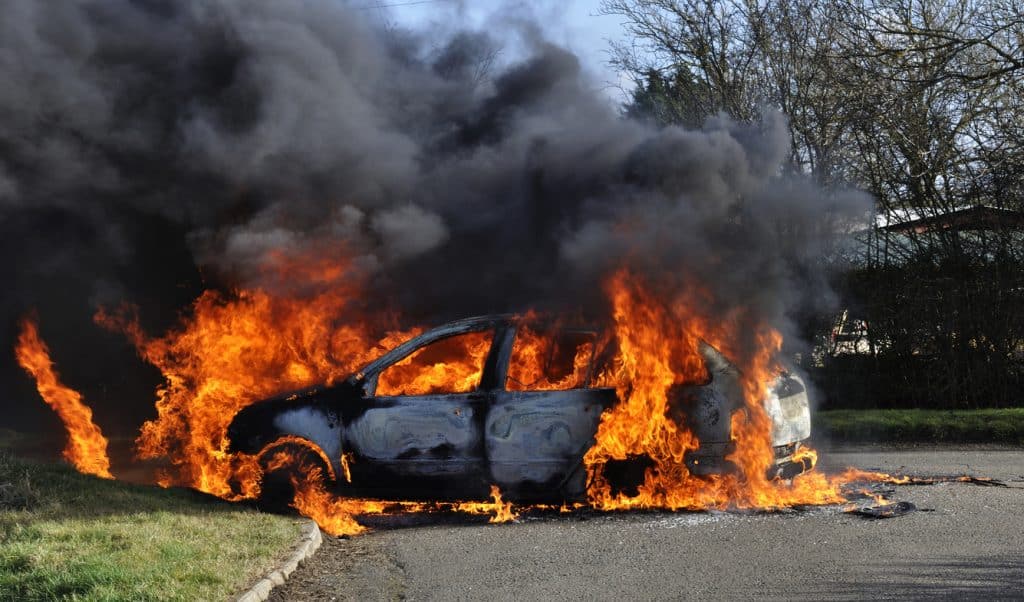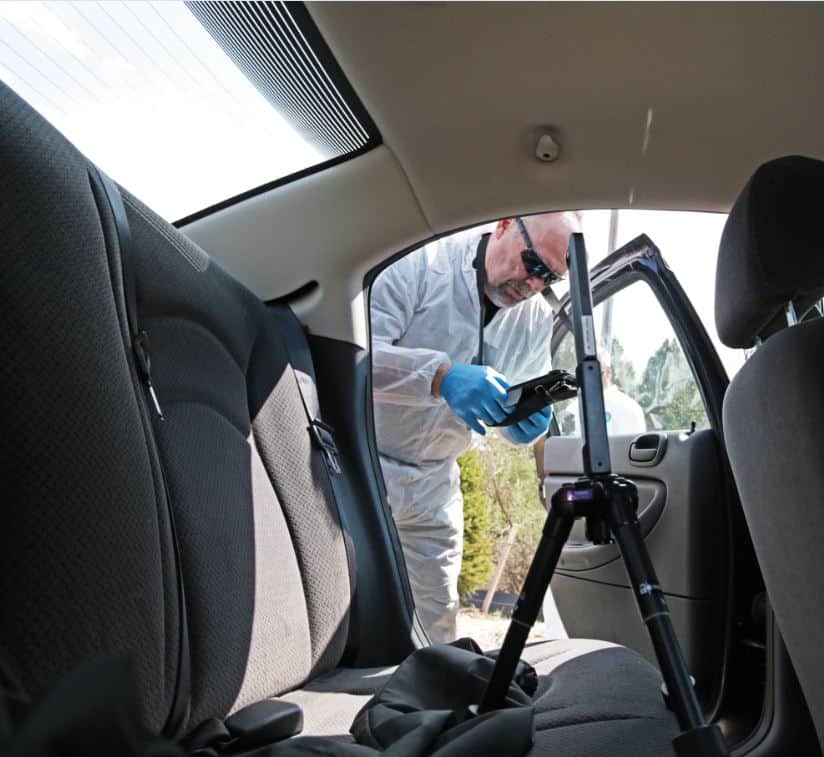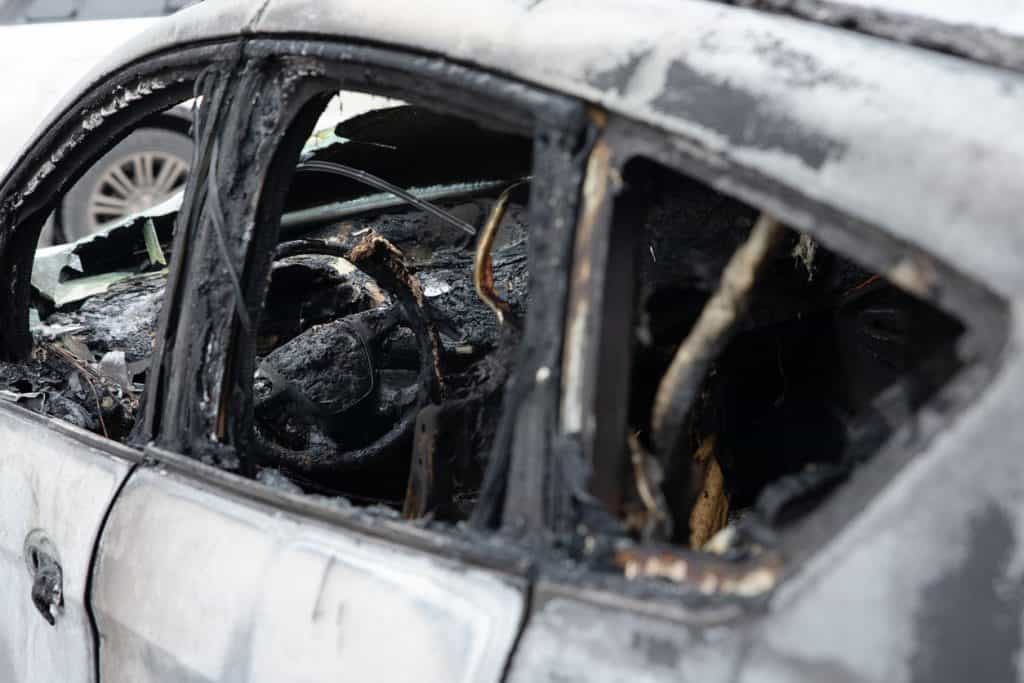Vehicle fire investigation is a complex discipline, requiring expert knowledge in combustion kinetics, heat transfer, and fluid dynamics to determine the origin and cause of a fire and conclude whether a criminal element was involved.
To determine the fire’s origin during vehicle fire investigations, investigators must examine three main areas of the vehicle: the engine compartment, the occupant compartment, and the cargo area. They also look for burn patterns and windshield integrity. Certain types of burn patterns, along with windshield strength, help the investigator narrow in on where the fire started in the vehicle.
As an example, it is common for fires originating in the occupant compartment to cause failure in the top of the windshield and produce a radial burn pattern on the hood of the vehicle. Fires starting in the engine compartment, on the other hand, often cause the bottom of the windshield to fail and produce radial burn patterns on the doors.
After determining the fire’s origin, the investigator may take a transmission fluid sample from the engine to test for foreign fluids and gather more information about the vehicle’s condition prior to the fire. Testing the fluids is quick, non-destructive, and helpful in identifying the potential cause of the blaze. If the tests come back signaling that other fluid was in the engine oil, for instance, this is an indicator that an internal leak could have caused the ignition.

How can OSCR360 technology assist investigators in documenting a vehicle fire?
OSCR360’s ability to capture the complexities of a vehicle fire scene and document important evidence connected to the origin and cause, makes the system an important technology tool at the scene and in the courtroom.
OSCR360 Provides Visual Context in Complex and Dark Scenes
The charred aftermath of a vehicle fire can make it difficult to differentiate important details, especially in a photo. Unlike standard digital photography that only captures still fragments to piece together, OSCR360 captures dynamic floor to ceiling spherical images that create a virtual walkthrough of the scene. OSCR360 photos captured in HDR-mode are well-lit and easy to see, even when captured in dark environments. OSCR360’s advanced mode allows fire investigators to adjust camera settings and the exposure. These features of OSCR360 help jurors or attorneys how have never experienced a fire scene to understand the full scope of the fire.
OSCR360 Connects Potential Ignition Sources/Accelerants to the Scene
OSCR360 documents burn patterns within the vehicle to depict where the fire started and how it spread through the car. Add a Point of Interest to the 360-degree photo to note exactly where and how the fire originated. Users can visually link pertinent digital evidence such as a PDF of a fluid sample report or close-up photos of windshield damage. Pan around the 360-degree image to observe the burn pattern(s) as it progressed through the vehicle interior.
Capture the Underside of the Vehicle and other Hard-to-Capture Images
Vehicle fire investigations come with enough challenges in terms of documenting the damage, entering a burnt-out car should not be one of them. OSCR360 can be placed inside a cramped, or even crushed, vehicle interior to capture detailed images. Even when there is no room for the tripod or a human to climb into the car and take photos, OSCR can be utilized. OSCR360 is self-righting, and can make up for any angle differences. This works especially well for capturing the undercarriage of the vehicle or holding OSCR through an open or broken window.

Walk Others Through the Fire Scene and Where Evidence was Discovered
After collecting images of the vehicle fire, OSCR360 helps to piece together the scene creating a virtual walkthrough of the damage. This includes the vehicle’s surroundings and images inside the vehicle. Investigators can embed other evidence, like DSLR photographs, from the scene to create a comprehensive case file that can be used in court. Instead of a jury looking at still images, they can walk through the scene and gain a better understanding of the vehicle fire investigation, as if they were there.
How can you become a certified vehicle fire investigator?
A Certified Vehicle Fire Investigators (CVFI) requires specialized training to obtain certification. The three-part certification process, administered by the National Association of Fire Investigators (NAFI), includes; the CVFI application, attendance at a NAFI-sponsored/approved CVFI course, and successful completion of the CVFI exam. It is important to note that the course is only offered every other year and consists of a four-day in-person training.

Interested in more information on vehicle fire investigations? Get in touch with the L-Tron team by emailing info@L-Tron.com or via social media @Ltroncorp.
Interested in more information on OSCR360 or seeing how agencies are using the system for fire investigations, training and more? Check out the resources below: